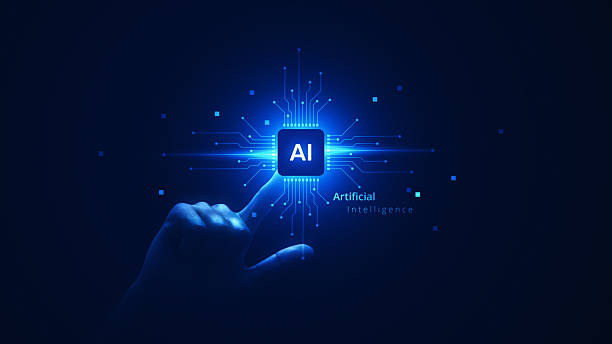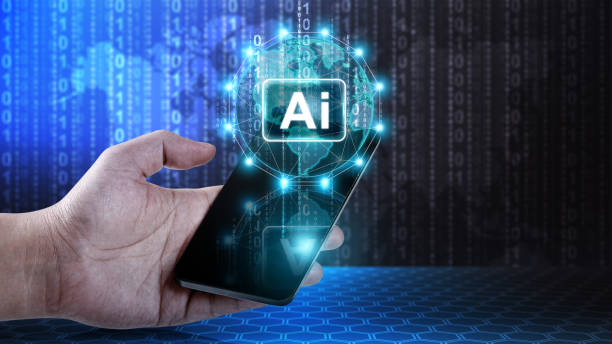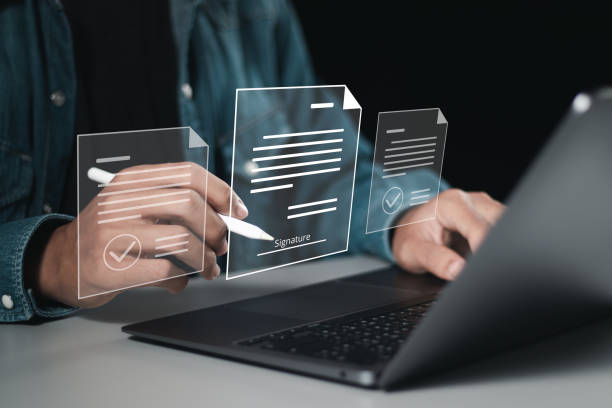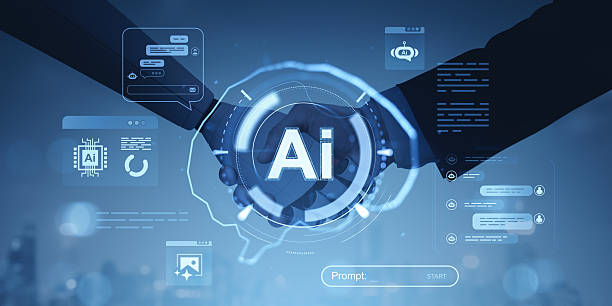What is an AI Robot and How Does it Work?

What is an AI Robot and How Does it Work?
#An AI Robot (Artificial Intelligence Robot) is a combination of two important technological fields: artificial intelligence and robotics.
Simply put, an AI robot is a machine that, using artificial intelligence algorithms, is capable of performing tasks that usually require human intelligence.
These tasks include learning, reasoning, problem-solving, natural language understanding, and pattern recognition.
Artificial intelligence enables the robot to adapt to various conditions and make appropriate decisions without the need for precise programming for every situation.
The way an AI robot works is that various data are first collected through sensors (such as cameras, microphones, etc.).
Then, this data is fed into artificial intelligence algorithms and processed.
These algorithms can be machine learning, neural networks, or other AI methods.
After data processing, the AI robot makes the necessary decisions and sends appropriate commands to its mechanical components to perform the desired action.
For example, an AI robot designed for facial recognition first receives a facial image via a camera, then uses facial recognition algorithms to identify the person’s identity, and finally, if necessary, proceeds to open a door or perform other related operations.
AI robots are continuously advancing and have numerous applications in various industries.
Tired of losing business opportunities due to not having a professional corporate website? Don’t worry anymore! With Rasavob’s corporate website design services:
✅ Your brand’s credibility and professionalism will increase.
✅ You will attract more customers and sales leads.
⚡ Get a free consultation now to start!
Types of AI Robots and Their Applications

Types of AI Robots and Their Applications
AI robots can be categorized based on various criteria.
One of the most common classifications is based on their application type.
Accordingly, AI robots can be divided into the following categories
Industrial Robots These types of robots are used for repetitive and precise tasks in factory production lines.
They can move parts, weld, paint, and so on, with high speed and accuracy.
Industrial AI robots help increase productivity and reduce costs.
Service Robots These types of robots are designed to provide services to humans.
They can assist nurses in hospitals, welcome guests in hotels, take orders in restaurants, and so on.
Service AI robots help improve service quality and increase customer satisfaction.
Military Robots These types of robots are used for dangerous and difficult tasks on the battlefield.
They can clear mines, collect intelligence, attack enemy forces, and so on.
Military AI robots help reduce human casualties and increase military power.
Space Robots These types of robots are used for space exploration and research.
They can collect soil and rock samples, capture high-quality images and videos of planets and moons, and so on.
Space AI robots help expand our knowledge of the universe and discover new resources.
In addition to these classifications, AI robots can also be categorized based on their type of movement (such as wheeled robots, flying robots, and humanoid robots), sensor types, and processor types.
Advantages and Disadvantages of Using AI Robots

Advantages and Disadvantages of Using AI Robots
The use of AI robots offers numerous advantages, including increased productivity, reduced costs, improved service quality, reduced human casualties, and increased accuracy.
However, the use of AI robots also has disadvantages, such as unemployment, over-reliance on technology, the possibility of errors, and ethical concerns.
It is important to carefully examine their pros and cons and make informed decisions before using AI robots.
One of the most significant concerns regarding AI robots is the potential for unemployment.
With the entry of robots into the job market, many jobs previously performed by humans may disappear.
To address this issue, it is necessary for individuals to learn new skills and adapt to new labor market conditions.
Additionally, governments should adopt policies that help create new job opportunities and support unemployed individuals.
Another concern regarding AI robots is over-reliance on technology.
If we become too dependent on robots, we may face serious problems in the event of a technical malfunction or a cyber attack.
To prevent this problem, it is necessary to always have a backup plan and regularly back up our systems.
| Advantages | Disadvantages |
|---|---|
| Increased productivity | Unemployment |
| Reduced costs | Dependence on technology |
| Improved quality | Potential for errors |
Challenges in AI Robot Development
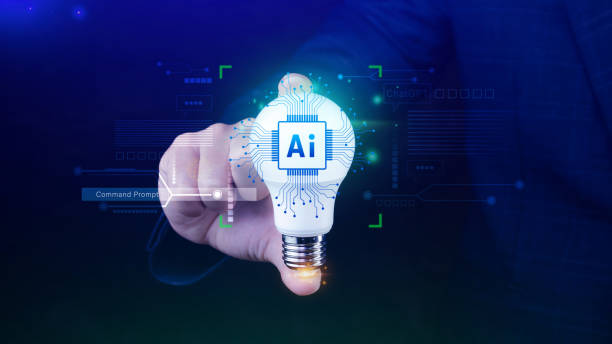
Challenges in AI Robot Development
The development of AI robots faces numerous challenges.
One of the most important challenges is the scarcity of training data.
AI algorithms require large amounts of data to learn and improve their performance.
If sufficient and high-quality training data is not available, AI robots cannot perform well.
To overcome this challenge, more training data needs to be collected and made available to developers.
Another challenge is the complexity of AI algorithms.
Designing and implementing AI algorithms is a difficult task and requires high expertise.
To overcome this challenge, new tools and methods for developing AI algorithms need to be created.
Additionally, more training in the field of artificial intelligence should be provided.
The third challenge is hardware limitations.
AI robots require powerful hardware to process data and execute complex algorithms.
If the necessary hardware is not available, AI robots cannot perform well.
To overcome this challenge, new hardware with higher processing power and lower energy consumption needs to be developed.
Furthermore, the high cost of developing and maintaining AI robots is also a significant challenge.
Are you tired of your e-commerce website not generating as much revenue as it could? Rasavob, specializing in professional e-commerce website design, solves this problem permanently!
✅ Increase sales rate and revenue
✅ High loading speed and unparalleled user experience
⚡ Get a free e-commerce website design consultation
The Future of AI Robots in Iran and the World
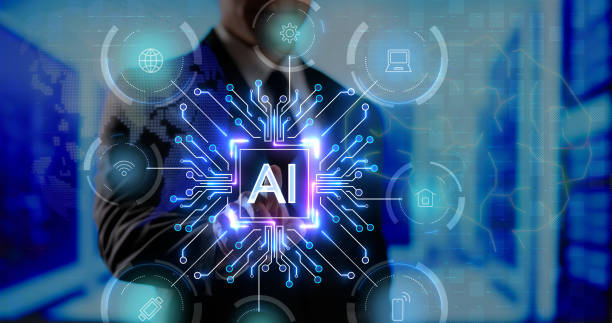
The Future of AI Robots in Iran and the World
The future of AI robots looks very bright.
With technological advancements, AI robots will become increasingly smarter, more efficient, and more affordable.
They will play a significant role in various industries, including manufacturing, services, healthcare, education, and transportation.
In Iran, too, given the abundant talents and existing potentials, the future of AI robots is very promising.
It is predicted that in the future, AI robots will also have a strong presence in homes.
They can assist us as personal assistants, perform daily tasks, care for children and the elderly, and so on.
Furthermore, AI robots can play an important role in education.
They can help students as private tutors, present learning materials in an engaging and interactive way, and so on.
In healthcare, AI robots can assist doctors and nurses, accelerate disease diagnosis, prescribe medications to patients, and so on.
Also, AI robots can play an important role in transportation.
They can autonomously drive vehicles, manage traffic, and so on.
Overall, AI robots can make our lives easier, safer, and more enjoyable.
AI robots have the potential to bring fundamental changes to how we live and work.
Key Concepts in Artificial Intelligence for Better Understanding AI Robots

Key Concepts in Artificial Intelligence for Better Understanding AI Robots
To better understand AI robots, familiarity with some key concepts in artificial intelligence is essential.
One of these concepts is Machine Learning.
Machine learning enables robots to learn from data and improve their performance without the need for precise programming.
There are various machine learning algorithms, including Supervised Learning, Unsupervised Learning, and Reinforcement Learning.
Another concept is Neural Networks.
Neural networks are computational models inspired by the structure of the human brain.
They consist of a large number of interconnected nodes (neurons).
Neural networks are very suitable for solving complex problems, such as facial recognition, speech recognition, and language translation.
Natural Language Processing (NLP) is also another important concept in artificial intelligence.
Natural language processing enables robots to understand human language and communicate with it.
This technology is used to build chatbots, translate texts, and summarize articles.
An AI robot thus becomes capable of effective interaction with humans.
Computer Vision is also a fundamental concept that enables robots to understand images and videos.
Using computer vision, robots can detect objects, identify faces, and track movements.
An AI robot can achieve more optimal performance by utilizing these concepts.
Impact of AI Robots on Economy and Society
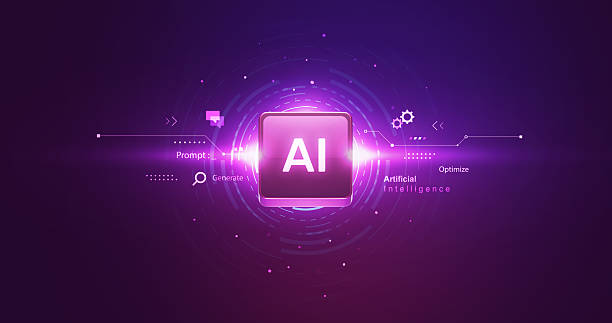
Impact of AI Robots on Economy and Society
AI robots can have profound effects on the economy and society.
On the one hand, they can help increase productivity, reduce costs, and improve the quality of life.
On the other hand, they can lead to unemployment, increased inequality, and ethical concerns.
It is important to carefully examine these impacts and prepare to deal with them.
In the economic sphere, AI robots can contribute to process automation, increased production, and reduced labor costs.
This can lead to economic growth and increased profitability for companies.
However, automation can also lead to unemployment, especially for repetitive and routine jobs.
To address this issue, it is necessary for individuals to learn new skills and adapt to the new labor market conditions.
Additionally, governments should adopt policies that help create new job opportunities and support unemployed individuals.
AI robots are transforming the economic structure of societies.
In the social sphere, AI robots can help improve the quality of life, increase access to services, and reduce inequality.
They can assist us as personal assistants, perform daily tasks, care for children and the elderly, and so on.
However, AI robots can also lead to ethical concerns, particularly regarding privacy, discrimination, and control.
To address these concerns, new laws and regulations regarding the use of AI robots must be enacted.
| Positive Impacts | Negative Impacts |
|---|---|
| Increased productivity | Unemployment |
| Reduced costs | Increased inequality |
| Improved quality of life | Ethical concerns |
Case Studies of Successful AI Robots in Various Industries

Case Studies of Successful AI Robots in Various Industries
AI robots have numerous applications in various industries, and some have achieved significant successes.
For example, in the automotive industry, Tesla uses AI robots to produce self-driving cars.
These robots can manufacture vehicles with high precision and speed, reducing human errors.
In the healthcare industry, AI robots can assist doctors and nurses, accelerate disease diagnosis, prescribe medications to patients, and so on.
For example, IBM’s Watson robot has been very successful in diagnosing cancer.
This robot can analyze medical data to detect the likelihood of cancer and help doctors choose appropriate treatment methods.
IBM Watson AI robot is a successful example of AI application in medicine.
In the customer service industry, chatbots can answer customer questions, solve their problems, and assist them in purchasing products and services.
For example, Amazon’s chatbot has been very successful in responding to customer inquiries and resolving their issues.
This chatbot can answer customer questions 24/7 and increase their satisfaction.
These examples demonstrate that AI robots can help improve performance and increase companies’ profitability.
Are you bothered by losing customers due to your e-commerce website’s outdated appearance or slow speed? Rasavob’s expert team, with professional e-commerce website design, solves these problems!
✅ Increase customer trust and your brand’s credibility
✅ Stunning speed and excellent user experience
Get a free consultation with Rasavob now ⚡
How Can We Build Our Own AI Robot?

How Can We Build Our Own AI Robot?
Building an AI robot is a complex process that requires various knowledge and skills.
However, with available tools and resources, a simple AI robot can also be built.
To start, you must first define your goal for building the AI robot.
What do you want your robot to do? After defining the goal, you need to collect the necessary training data.
AI algorithms require large amounts of data to learn and improve their performance.
Then, you need to choose an appropriate AI algorithm.
There are various AI algorithms, including machine learning, neural networks, and natural language processing.
After selecting the algorithm, you need to implement it.
You can use various programming languages such as Python, Java, and C++ to implement the algorithm.
Finally, you need to test your robot and improve its performance.
Using online tools and resources, a simple AI robot can be built and trained for various tasks.
Building an AI robot is a continuous learning process and requires patience and perseverance.
To get started, you can use online learning platforms and open-source AI libraries like TensorFlow and PyTorch.
Additionally, Raspberry Pi is an affordable and powerful hardware that can serve as the brain for your robot.
The AI robot you build can be an exciting and educational project.
Important Tips for Choosing and Using AI Robots
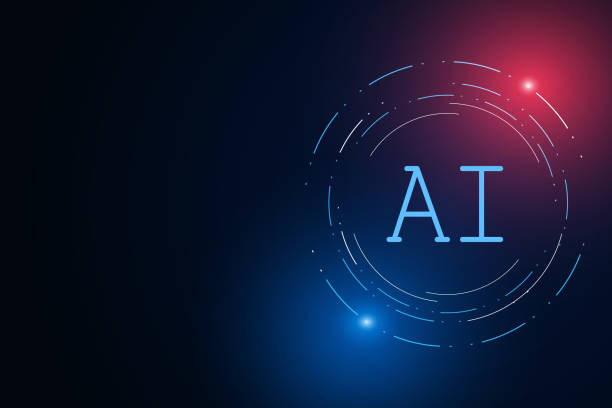
Important Tips for Choosing and Using AI Robots
Choosing and using AI robots requires precision and attention.
First, you must accurately define your needs.
What purpose do you want to use the AI robot for? Then, you should examine different robots and compare their features and capabilities with your needs.
Pay attention to the robot’s price, performance, security, and reliability.
After selecting the appropriate robot, you must install and configure it correctly.
Follow the manufacturer’s instructions and properly configure security settings.
Additionally, you should regularly maintain and update your robot.
Update the robot’s software and replace its hardware components if necessary.
Protect your data and prevent cyberattacks.
By observing these tips, you can use your AI robot safely and effectively.
An AI robot can be a powerful tool for improving performance and increasing productivity, but its correct use is essential.
When using an AI robot, respect individuals’ privacy and avoid unauthorized data collection and use.
Also, take responsibility for the robot’s use and prevent its misuse.
An AI robot is a tool and should not be overly trusted.
You should always monitor the robot’s performance and take corrective actions if necessary.
Frequently Asked Questions
| Row | Question | Answer |
|---|---|---|
| 1 | What is an AI robot? | An AI robot is a machine capable of understanding, reasoning, learning, and problem-solving, and can perform complex tasks with relative autonomy. |
| 2 | What are the most important applications of AI robots? | Key applications include industrial manufacturing, customer services (chatbots), medicine and surgery, autonomous transportation, space exploration, and military affairs. |
| 3 | What is the main difference between an AI robot and a regular robot? | A regular robot merely follows programmed instructions, whereas an AI robot can learn from data, make decisions, and adapt itself to new environments. |
| 4 | How do AI robots learn? | They learn through machine learning algorithms (such as deep learning, reinforcement learning) and by processing vast amounts of data, identifying patterns, and improving their performance. |
| 5 | Can AI robots have emotions? | Currently, AI robots do not possess real emotions in the human sense. They can mimic or detect emotions, but they do not understand or experience them. |
| 6 | What are the current limitations of AI robots? | Limitations include the need for large amounts of data, inability to understand abstract concepts, lack of true creativity, ethical issues, and challenges in generalization to new environments. |
| 7 | What is the role of AI in the development of humanoid robots? | AI helps humanoid robots to walk, maintain balance, perceive their surroundings, interact with humans, and perform complex tasks. |
| 8 | How is the future of AI robots predicted? | AI robots are predicted to become smarter, more autonomous, and capable of performing more complex tasks in daily life and industry, with increased human interaction. |
| 9 | Can AI robots replace all human jobs? | It is unlikely that all human jobs will be replaced. Robots will take over many repetitive and dangerous tasks, but jobs requiring creativity, empathy, and ethical judgment will remain. |
| 10 | What ethical and social challenges arise with the expansion of AI robots? | Challenges include issues related to privacy, data security, ethical decision-making by robots, impact on employment, and accountability in case of errors. |
And other services of Rasavob Advertising Agency in the field of advertising:
Smart Social Media: An effective tool to increase sales by using real data.
Smart Link Building: Revolutionize SEO ranking improvement with the help of real data.
Smart Content Strategy: Professional optimization for customer attraction using user experience customization.
Smart UI/UX: A creative platform for improving customer behavior analysis with attractive user interface design.
Smart Marketplace: A combination of creativity and technology for user interaction by optimizing key pages.
And over hundreds of other services in the field of internet advertising, advertising consultation, and organizational solutions.
Internet Advertising | Advertising Strategy | Advertorials
Resources
Digikala Mag AI Robots Guide
The Future of AI and Robotics on Zoomit
Smart Robots and Their Impact on Society
The Role of Artificial Intelligence in Daily Life – IRNA
? To reach the pinnacle in the digital world, Rasavob Afarin Digital Marketing Agency, by offering comprehensive services including professional website design, SEO, and online advertising, paves the way for your business’s success.
📍 Tehran, Mirdamad Street, next to Bank Markazi, Southern Kazeroon Alley, Ramin Alley, No. 6

